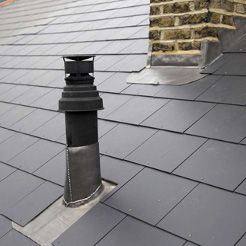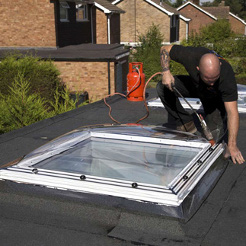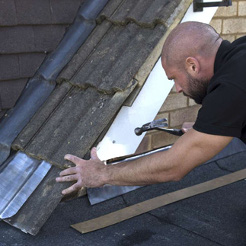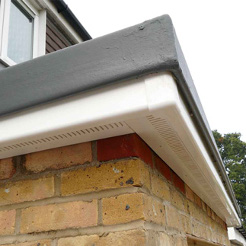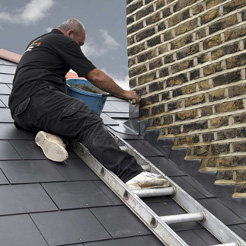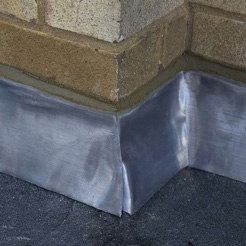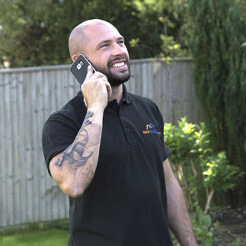Last month we looked at the differences between pitched and flat roofs and the pros and cons of each. This month we are looking in a little more detail at the most popular types of flat roofs and consider the benefits and disadvantages of the three:
- Three-layer high-performance felt
- EPDM (also known as rubber roofing)
- GRP (also known as fibreglass roofing)
Three-layer high-performance felt
Forget what you have heard before about this type of roof and what a bad reputation it has – things have changed considerably in the last few years. No longer a ‘pour and roll’ type of roofing, the more modern version is made of bitumen (or modified bitumen) making it more resistant to cracking and UV damage. The three layers refer to a perforated underlay, followed by a torch-on underlay felt, and finished with mineral torch-on felt layer, all being high performance. The layers come in rolls which are set using a blow torch heating and sealing the felt, melting it on to the roof. The cheapest option on the market, it will work on any size roof, although is not the most suitable for heavy footfall particularly during hotter spells which can more easily lead to scuffing and penetrations. The variety of finishes and colours on the market offers options on the final look of your felt roof and most roofers will guarantee it for a minimum of 10 years.
EPDM (rubber roofing)
To give it its full and proper name, ethylene propylene diene monomer, EPDM is a recent addition to the UK market following long and successful use in the USA as well as in a number of other countries. The material is lightweight and tough, a strong combination making it a popular choice for many homeowners. Subject to the size of roof it is being applied to, it can be installed with no joints as a single, complete layer. EPDM is forever improving and there is now a fleeced- back version which offers reinforcement to reduce the shrinkage rate, and therefore lasts longer. Competitively priced, it is a good option for roofs which do not have too many complicated details such as pipes and guttering as that can make it look messy, although the right experienced contractor will always do a good job. It is very durable and easily repaired although may not be the most attractive option to look at compared to the others. Installed properly, an EPDM roof could last a few decades!
GPR (fibreglass roofing)
Glass reinforced plastic (GRP) roofs have been around for 30-odd years, but it’s only in the last decade that they have become even more popular. The improvement of installation, knowledge and techniques, together with proper roofing resins, have led to this type of roof becoming popular as a jointless roofing option. GRP is suitable for all roof sizes, catering for various levels of complexity, but considerations must be taken in regards to temperature and weather forecasts, preparation is key to a GRP roof. In terms of cost it is typically slightly more expensive that EPDM options, but is said to outlast all other materials. When it comes to attractiveness it is probably the best out of the three options with a variety of finishes available and it even works on complex roof shapes. Damage resistant, the addition of an anti-slip coating gives it even greater assurance when it comes to high footfall. It will be typically guaranteed for 15-25 years, depending on the build up.
Want to find out more about flat roofs and which option may be best for your property? Our Roof Rescue team is here to advise you. Just call us on 020 3189 1618 for a chat or to book an appointment.

